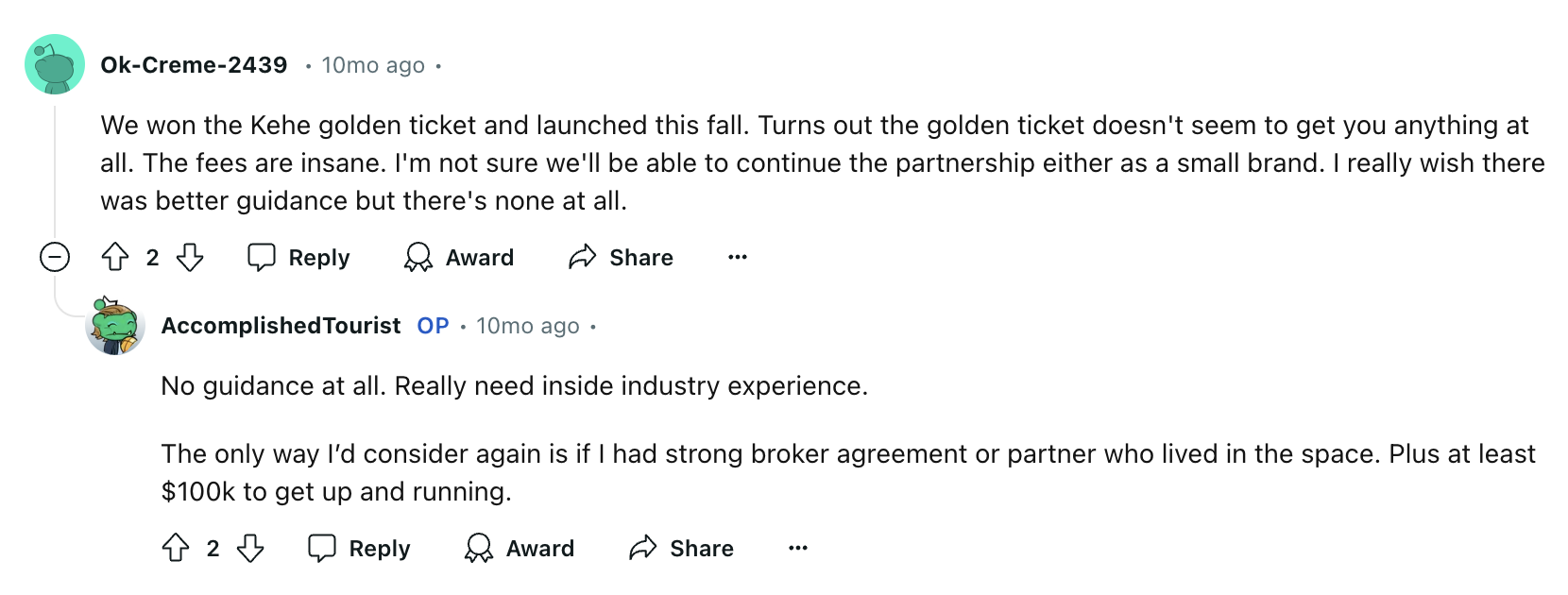The True Cost of National Distribution
National distributors like UNFI, KeHe, Sysco, Rainforest Distribution, and more play a crucial role in getting products onto retail shelves. one quick glance at the numbers reveals the influence of these major distributors. For example, KeHe distributes more than 40,000 products across the US. While landing a deal with a national distributor like KeHe may feel like a major win, their service usually comes with a price, which can be alarming for new, emerging brands.

Deductions: Are they a profit center or not?
Working with a national distributor comes at a cost. Below is the typical breakdown:
-
Deductions: In it’s most basic terms, a deduction (or chargeback) is a charge from the distributor to the brand for a variety of reasons. The legitimate deductions are typically TPM (Trade Promotion Marketing) which includes things like Off-Invoices (OI):
- Off-Invoices are discounts given to distributors or retailers that are deducted directly from the distributor invoice. For food and beverage brands, discounts often amount to 15% of the regular case sales price. To learn more about TPM, click here.
-
Chargebacks and Fees: These deductions (also known as Chargebacks) can turn into a profit center for distributors. These include thing such as:
- Late shipments, incorrect pricing, damaged goods, incorrect labeling, and more.
Chargebacks can seriously add up!
How can you avoid the delightful surprise of opening an invoice with an unreal amount of deductions?
Focus on building a strong foot-hold in your local and regional markets.
Actionable Insights for Emerging Brands
- Focus on Regional Distributors
- Work with regional distributors until you have a steady sales velocity and a solid supply chain. During this time, make sure to collect the data that will help you create a good story when it’s time to sell into national retail.
- Develop Strong Retail Relationships
- Build relationships with retailers and find out which distributors they like to work with. It’s important to establish and maintain contact with retail buyers to ensure ongoing communication and support because this is your final customer.
- Implement Deduction Management
- Track and analyze all deductions meticulously. Consider using a tool like Glimpse, Promomash, Vividly, or Floret to analyze and dispute deductions when working with national distributors.
- Build Relationships with Regional Distributors
- Regional distributors are often more receptive to helping grow emerging brands.Cultivate relationships with regional distributors who can provide personalized attention and support.
- Plan for Trade Promotions
- Incorporate trade promotions into the overall marketing and financial plan. Accrue for and reconcile trade promotions monthly to maintain accurate financial records.
While national distribution can offer broad market access, it comes with significant costs and challenges for emerging brands. By focusing on regional distributors, building strong retail relationships, and implementing effective deduction management strategies, emerging CPG brands can navigate the distribution landscape more successfully.
Remember, the key to success in CPG distribution lies in careful planning, relationship building, and diligent financial management.